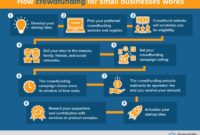Retail forex trading has become increasingly popular in recent years, allowing individual traders to participate in the global currency market. This guide will explain what retail forex trading is, how it works, and provide essential tips for success. Whether you’re a complete novice or looking to refresh your knowledge, this article will equip you with the information you need.
Table of Contents
ToggleRetail Forex Trading Explained:Understanding Forex Market Basics
Forex (foreign exchange) trading involves buying and selling currencies in the global marketplace. The forex market is the largest and most liquid financial market, with daily trading volumes exceeding $6 trillion.
Retail forex trading refers to individual traders participating in this market, typically through online brokers. Unlike institutional traders who handle large volumes, retail traders trade smaller amounts.
How Retail Forex Trading Works
- Currency Pairs: Forex trading always involves currency pairs, where one currency is exchanged for another. For example, in the EUR/USD pair, you’re trading Euros against U.S. Dollars.
- Bid and Ask Prices: The bid price is the amount a trader can sell a currency for, while the ask price is what they can buy it for. The difference between these two prices is known as the spread.
- Leverage: Retail traders often use leverage to control larger positions with a smaller amount of capital. For example, with 100:1 leverage, a trader can control $100,000 with just $1,000. While leverage can amplify profits, it also increases the risk of losses.
Getting Started with Retail Forex Trading
Choose a Reliable Forex Broker
Selecting the right broker is crucial for your trading success. Look for brokers that offer:
- Regulation: Ensure the broker is regulated by a recognized authority (e.g., FCA, ASIC).
- Low Spreads: Choose brokers with competitive spreads to minimize trading costs.
- User-Friendly Platform: A reliable trading platform is essential for executing trades efficiently.
Open a Trading Account
After choosing a broker, you’ll need to open a trading account. Most brokers offer different account types, such as:
- Standard Accounts: Suitable for most traders, offering access to a wide range of currency pairs.
- Mini Accounts: Allow trading in smaller volumes, making them ideal for beginners.
- Demo Accounts: Enable you to practice trading with virtual money, which is great for learning the ropes.
Develop a Trading Plan
A well-defined trading plan is vital for success in retail forex trading. Your plan should include:
- Trading Goals: Define your short-term and long-term objectives.
- Risk Management: Decide how much capital you’re willing to risk on each trade.
- Trading Strategy: Outline the methods you will use for entering and exiting trades.
Essential Trading Strategies
Day Trading
Day trading involves buying and selling currencies within the same trading day. Traders aim to profit from small price movements, closing all positions before the market closes to avoid overnight risk.
Swing Trading
Swing trading involves holding positions for several days to capture larger price movements. This strategy allows traders to take advantage of market trends without the pressure of constant monitoring.
Scalping
Scalping is a high-frequency trading strategy that focuses on making numerous small profits throughout the day. Scalpers hold positions for very short periods, typically seconds to minutes.
Key Considerations for Retail Forex Trading
Understand Market Analysis
Successful forex trading requires an understanding of market analysis, which can be divided into two main types:
- Fundamental Analysis: Involves evaluating economic indicators, interest rates, and geopolitical events that influence currency values.
- Technical Analysis: Focuses on historical price movements and chart patterns to predict future price trends.
Risk Management
Effective risk management is crucial to protect your trading capital. Consider the following techniques:
- Set Stop-Loss Orders: A stop-loss order automatically closes your position at a predetermined price, limiting potential losses.
- Position Sizing: Determine the size of each trade based on your total account balance and risk tolerance.
- Diversification: Spread your investments across different currency pairs to reduce risk.
Stay Informed
Keep yourself updated on global economic events and news that may affect the forex market. Following an economic calendar can help you track important data releases and announcements.
Conclusion
Retail forex trading offers exciting opportunities for individual traders to participate in the global currency market. By understanding the basics, choosing a reliable broker, developing a solid trading plan, and practicing effective risk management, you can navigate this dynamic market with confidence.
Remember that trading involves risks, and it’s essential to educate yourself continuously. Utilize demo accounts to practice and refine your strategies before committing real capital. Happy trading!




